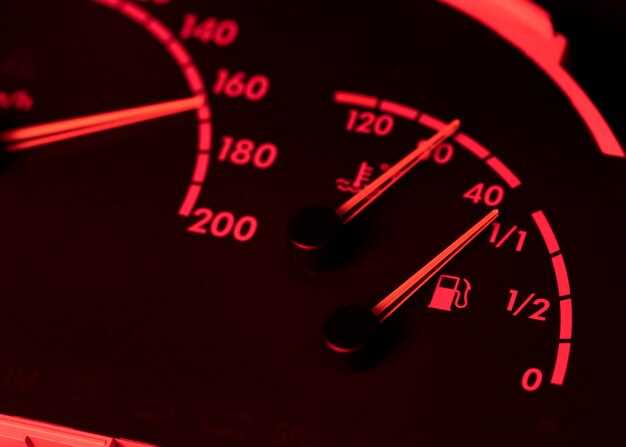
The performance of an engine is intricately linked to its fuel mapping, which is managed by the ECU (Engine Control Unit). Efficient fuel mapping ensures that the engine receives the optimal amount of fuel at various operating conditions, significantly impacting power output and fuel efficiency. Modern vehicles feature sophisticated ECUs that utilize advanced algorithms to adapt fuel delivery based on real-time data, enhancing overall performance and reducing emissions.
Real-time engine performance adjustments are crucial in maximizing efficiency, particularly in dynamic driving situations. The ECU continuously monitors various parameters such as engine temperature, throttle position, and air-fuel ratio. By analyzing this data, the ECU can make instantaneous modifications to the fuel map, optimizing combustion and ensuring the engine runs smoothly under varying loads. This capability not only improves driving experience but also extends engine life by preventing operating conditions that could lead to wear or damage.
In recent years, advancements in fuel injection technology and tuning techniques have revolutionized the way performance is managed. With the ability to perform real-time adjustments, tuners can fine-tune fuel maps to meet specific needs, whether for high-performance racing or fuel-economy-focused driving. Understanding the intricacies of fuel mapping and the real-time adjustments made by the ECU is essential for anyone looking to enhance their engine’s performance and efficiency.
Understanding Fuel Maps: Structure and Data Interpretation
Fuel maps are integral to the operation of an Engine Control Unit (ECU), as they directly influence the air-fuel mixture delivered to the engine. These maps allow for precise control of engine performance, ensuring optimal combustion under various operating conditions.
The structure of fuel maps typically consists of a grid or matrix format, where the axes represent key parameters such as engine speed (RPM) and load (manifold pressure or throttle position). Each cell in the grid stores a specific fuel value, indicating the quantity of fuel to be injected into the engine based on the corresponding RPM and load conditions.
Key components of fuel maps include:
- Engine Speed (RPM): Generally represented on the vertical axis, it indicates how fast the engine is running.
- Load: Shown on the horizontal axis, this parameter reflects the engine’s demand for power under different driving conditions.
- Fuel Values: The numeric values within the grid represent the duration or amount of fuel to be injected by the fuel injectors, often measured in milliseconds or duty cycles.
Successful interpretation of fuel maps involves understanding how changes in one parameter affect the others. For instance, increasing the throttle may alter the load and necessitate a corresponding adjustment in fuel delivery to maintain optimal combustion efficiency.
- Mapping Process:
- Calibrate the ECU for various operating environments.
- Conduct dynamometer testing to collect data for different RPM and load conditions.
- Adjust the fuel values to optimize performance based on test results.
- Real-Time Adjustments:
- Utilize feedback from sensors (e.g., oxygen sensors) to make instantaneous corrections.
- Employ trim adjustments to fine-tune fuel delivery in response to environmental changes.
In conclusion, mastering the structure and interpretation of fuel maps is essential for achieving precise fuel delivery in today’s complex engine management systems. Enhancements in ECU technology allow for dynamic adjustments that cater to real-time conditions, ultimately improving performance and efficiency.
Optimizing ECU Settings for Enhanced Engine Performance

To achieve optimal engine performance, fine-tuning the Engine Control Unit (ECU) settings is crucial. The ECU manages various engine parameters, and adjustments to these settings can significantly impact both efficiency and power output. One of the primary factors to modify is the fuel map, which dictates how much fuel is injected into the combustion chamber under different operating conditions.
Firstly, understanding the fuel map is essential. It consists of a grid where the axes represent engine speed and load. Each cell in this grid indicates the corresponding amount of fuel the ECU should deliver. By analyzing and adjusting this map, tuners can ensure that the engine receives the right fuel quantity at various RPMs, optimizing combustion efficiency and reducing engine lag.
Another key setting to optimize is the ignition timing, which must be carefully synchronized with the fuel injection events. Advanced tuning tools can assist in mapping out the ideal ignition timing settings, maximizing power while minimizing knock. This can further enhance engine response and overall performance, particularly under load.
Monitoring real-time engine data is also essential during ECU optimization. By utilizing diagnostic tools that provide insights into parameters such as air-fuel ratio, exhaust gas temperature, and engine knock, tuners can make informed adjustments to the fuel map and ignition timing. This real-time feedback allows for iterative tuning, leading to improved drivability and responsiveness.
Furthermore, the choice of fuel type significantly influences ECU settings. Different fuels have varying combustion properties, which necessitates a corresponding adjustment in the fuel map to achieve optimal performance. When switching to a higher octane fuel, for instance, the engine may tolerate more aggressive ignition timings, leading to increased power output.
Lastly, regular testing and validation after adjustments ensure that optimization efforts yield the desired results. Dyno testing provides empirical evidence of performance gains, allowing for continuous refinement of the fuel map and ECU settings. Through systematic optimization, vehicle owners can achieve substantial improvements in engine performance, driving experience, and efficiency.
Real-Time Adjustments: Techniques and Tools for Performance Tuning

Real-time adjustments are crucial in optimizing engine performance and enhancing fuel efficiency. Advanced techniques allow for immediate alterations to the fuel map, ensuring that the engine operates at its peak under varying conditions. These adjustments can significantly impact throttle response, power output, and overall drivability.
One effective technique for real-time tuning involves the use of wideband oxygen sensors. These sensors provide precise feedback on the air-fuel mixture, enabling the engine control unit (ECU) to make quick modifications to the fuel map. By continuously monitoring the exhaust gases, tuners can adjust the fuel delivery in real time, ensuring optimal combustion and reducing emissions.
Another important tool in this process is data logging software, which captures engine parameters during operation. By analyzing this data, tuners can identify trends and make informed decisions about necessary adjustments to the fuel map. This real-time feedback loop allows for iterative tuning, leading to better engine performance and efficiency.
Incorporating closed-loop control strategies is also essential for real-time adjustments. These strategies utilize feedback from various sensors to make dynamic changes to the fuel map based on current driving conditions. For example, during acceleration, the ECU can enrich the fuel mixture to improve power delivery, while during steady cruising, it can lean out the mixture for fuel savings.
Modern tuning tools, such as handheld programmers and laptop-based software, enable tuners to quickly modify fuel maps while on the go. These tools often come equipped with user-friendly interfaces, allowing for easy access to essential parameters such as fuel table adjustments, ignition timing, and boost levels. With such technologies, performance tuning can be both efficient and effective.
Lastly, advanced engine management systems, such as standalone ECUs, provide unparalleled flexibility for real-time adjustments. These systems offer comprehensive control over every aspect of engine performance, allowing for personalized fuel mapping strategies tailored to specific driving styles or conditions. The ability to adjust parameters in real time empowers enthusiasts and professionals to maximize engine potential.












